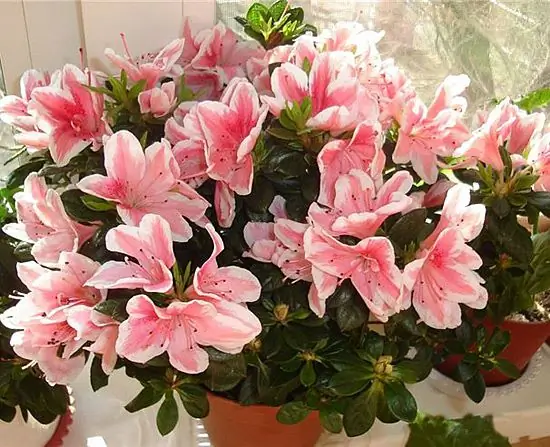Azalea is one of the few spectacular flowering plants in the fall-winter season. Flower shops offer a variety of colorful azaleas. And it is difficult to resist buying. But at home difficulties in care begin: the tips of the leaves turn brown and crumble, the buds fall off, the plant withers.

Azalea will only feel good in bright, cool, but not cold rooms. If the room is hot, dry air from central heating, then in such conditions it will simply wither away, leaves and buds will crumble, and no amount of spraying with water to increase the humidity of the air will help.
Azalea, like all rhododendrons, prefers acidic soil. The substrate can be bought in the store or prepared by yourself using 1 part of ginger peat and 1 part of pine needles, adding 1 g of chalk per 1 liter of mixture.
Water the azalea with soft cool (not ice-cold) water, without lime. Rainwater, snow water will do. Watering the plant abundantly, let the top layer of the earthen coma dry out before proceeding to the next watering. With excessive dampness, the root system suffers and the leaves wither. Once or twice a month, citric, ascorbic or oxalic acid, 0.3-0.4 g / l of water should be added to the irrigation water. If there is an excess of acid in the soil, then the tips of the leaves acquire a reddish-purple color.
Watering the azalea in the pan, the soil, saturated with water, pushes out the air, and the plant begins to "suffocate", the leaves turn yellow, become stained, wither and crumble. Therefore, it is preferable to water it from above or immerse the pot in a container with water and allow excess moisture to drain. When the soil in the pot dries up, the flowers are the first to fade, then the unopened buds, the tips of the foliage turn brown.
It is imperative to feed blooming azaleas. At the same time, fertilizers are used for plants that love acidic soil, for example, fertilizers for heather plants. Such fertilizers should not contain chlorine.
After flowering, the azalea is pruned, if necessary, transplanted into a new pot. The pot is chosen one size larger than the previous one.
In spring, when the threat of frost damage to plants has passed, the azalea can be dug in with a pot in the garden, in the diffused shade of a tree, so that there is no scorching sun. During the summer, it must be watered and fed. By the fall, having rested, the plant will pick up buds again. Before freezing, a pot of azalea is dug up and brought into the house. With proper care, azalea will live long and delight with its lush flowering for many seasons.






